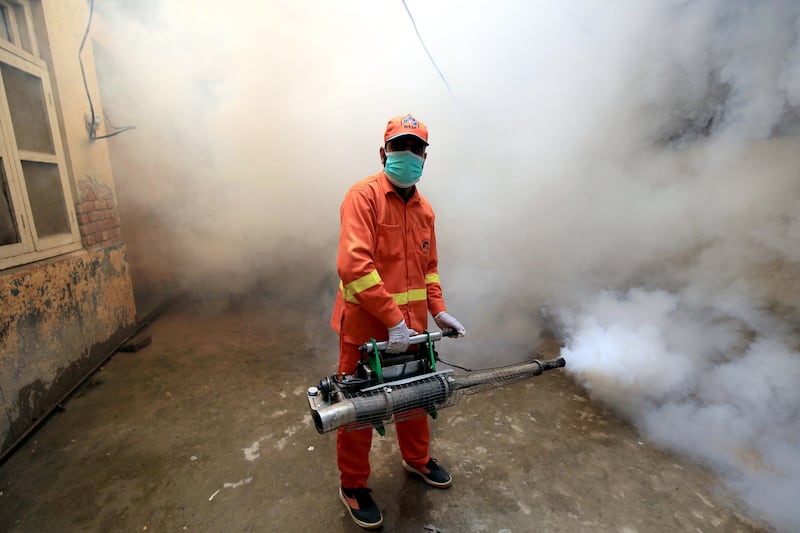Climate change will lead infectious diseases such as malaria to spread across more parts of the world, experts at an Abu Dhabi conference said on Tuesday.
Speaking at the Forecasting Healthy Futures summit, scientists revealed the wider health impact of an increase in temperature, with more people exposed to infectious diseases such as malaria, cholera, dengue fever and tuberculosis.
“This is not just a climate crisis, but also a health crisis,” said Felipe Colon Gonzalez, technology lead for science and health at the Wellcome Trust, a charitable research foundation.
“Issues like food insecurity and the spread of infectious disease are becoming more frequent and severe.
“Malaria is now increasingly observed at higher altitudes in areas of Africa and Latin America, and it is also re-emerging in countries such as Greece where it had been previously eradicated.
“We have seen local outbreaks in Europe and Japan, and environments change to allow cholera and tuberculosis to thrive. This has been facilitated by a change in the climate."
Mosquitos searching for better weather
Experts said higher temperatures encouraged some invertebrates to find cooler weather at higher altitudes, with more rainfall and humidity causing a multiplication of malaria-carrying mosquitos.
According to the Lancet Countdown on health and climate change, the number of months suitable for the transmission of Plasmodium falciparum — the deadly parasite that causes malaria in humans — is increasing.
“Due to the changing weather and climate conditions, the environment is becoming more suitable for the transmission of infectious diseases that are of particular cause for concern,” said Marina Romanello, executive director of the Lancet Countdown for climate health action.
“In our assessment of infectious disease such as dengue fever, malaria, cholera and tuberculosis, we are seeing the range of which the environment is suitable for transmission increasing.
“This will expose more people to these threats, particularly those living at higher altitudes who were previously considered safe from these diseases.”
The report assessed the number of months suitable for malaria to thrive in areas at least 1,500 metres above sea level, evaluating temperature, rainfall and humidity.

The number of months in which the climactic conditions enabled malaria transmission has increased by 31 per cent in the Americas and 13 per cent in Africa in the past six decades, it found.
“With malaria, in South America and Africa we are seeing higher areas previously considered safe from malaria becoming more suitable for transmission, so more people are being exposed,” said Ms Romanello.
“This will put increasing pressure on health systems.”
A recent study by biologists at Georgetown University’s Centre for Global Health Science and Security looked at how malaria-carrying mosquitos had shifted to higher ground over the past 100 years.
Research looked at how mosquito populations moved to higher elevations of around 6.5 metres each year in sub-Saharan Africa and also about 4.7km further from the Equator each year.
Speaking at the Abu Dhabi summit, Martin Muchangi, director of population health and environment at the African Medical and Research Foundation, said that trend was already being seen in Kenya.
“In Kenya we are coming from another season of major drought, the fifth year,” he said.
“When it comes to infectious diseases like malaria, we are now seeing it in the highland areas where it was not prevalent before.”
As temperatures rise, climate change will have an increasing impact on human health across the world due to more extreme weather events and heatwaves, the conference heard.
Heat-related deaths globally increased by 68 per cent between 2000–04 and 2017–21, the report said, while people experienced an average of nine more days of very high or extremely high meteorological wildfire danger in 2018–21, compared to 2001–04.







